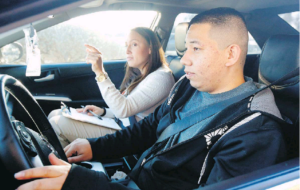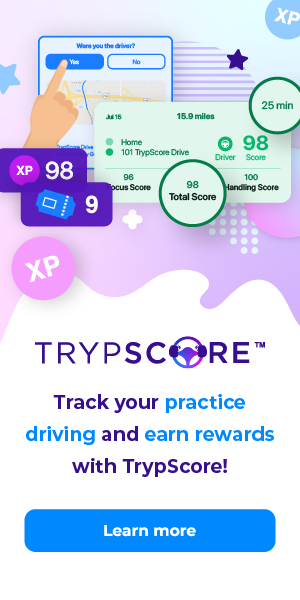How to make B.C.’s driving tests better

After their learning phase and a 45-minute road test, new drivers can drive unaccompanied, with restrictions.
New drivers successfully completing the graduated licensing program course receive the benefit of two credits toward secondary school graduation and a six month relief from the two year New Driver (N) phase.
The course itself is not standardized throughout the province. There is a degree of content latitude granted by ICBC to driving schools teaching the course, beyond the core mandatory topics to be presented.
Driving schools and instructors must have an additional qualification in order to teach the classroom theory and in-car lessons.
Most such courses include at least 12 hours of in-car driving and 20 hours of in-class time, although there is additional latitude in this, as well.
The Learning phase (L) in B.C. is a minimum duration of one year.
The N phase lasts two years under normal circumstances, 18 months with the GLP course completion.
Students are able to experience all four seasons throughout the one-year learning phase.
They must be accompanied by a licensed driver over the age of 25.
Upon passing a 45-minute in-car road test, they can drive unaccompanied in the N phase, with the restriction of only one more nonrelated passenger, and no alcohol consumption or use of electronic devices while driving.
Graduates of this program must remain blamable-crash-free for the entire N term and must also receive no more than one moving violation during this time.
Ontario has a similar course, which is thought to be second only to B.C. It offers a financial incentive for taking the course.
By comparison, the slack regulations of some other North American jurisdictions are surprising, if not laughable.
In California, the learner’s written theory test can be done online, with no proof of who actually wrote the test. It seems more like a poor excuse to collect a fee or an administrative necessity.
In some southern states, the road test is conducted in a parking lot. The newdriver candidate can get a licence to drive without ever demonstrating their driving ability in traffic.
Some driving tests have less than 10 minutes behind the wheel.
There are some provinces and states that do attempt to have a minimum standard driving course, which in most cases does not go beyond six hours behind the wheel.
Many other jurisdictions have a high-school course that provides for an introduction to driving, with a qualified school teacher as the instructor.
B.C. does not have any requirement for a new driver to take professional driving instruction, let alone a full course.
All professional driving instruction to attain an initial licence is voluntary.
There are only about 50 driving schools of the 600-odd in B.C. that offer the GLP course.
Only about eight per cent of new drivers actually take it. The cost is a factor in the low patronage rate.
There is also the time commitment over a 12-month period to be considered.
The capital investment for driving schools that teach a GLP course is significant.
The additional cost to train staff is also an impediment.
It is difficult for smaller driving schools in rural areas to qualify as GLP schools, and even more difficult to attract students when travel distances are considered.
There are several ways ICBC could make this topnotch course more attractive.
Greater time and financial incentives could be offered.
There could be an accelerated insurancediscount plan for those who remain crash-free.
A further incremental reduction of the two-year N phase is also an option.
It could make the best course even better patronized.


